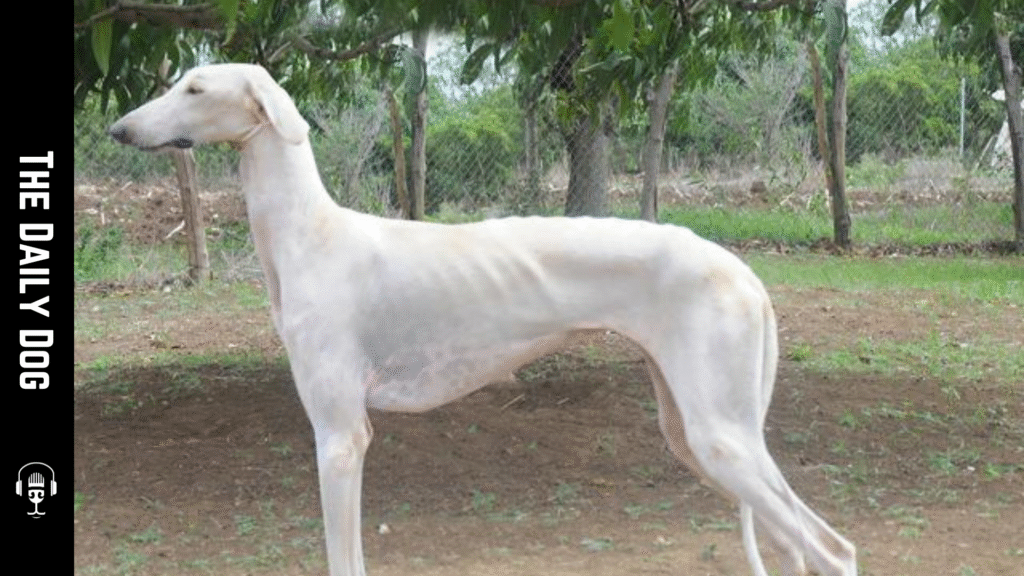In the quiet corridors of canine history, the Mudhol Hound stands out as a striking embodiment of agility, grace, and unwavering companionship. Known for its sleek silhouette, steady gaze, and athletic prowess, this Indian sighthound has earned admiration from breeders, enthusiasts, and families around the world. The Mudhol Hound is more than a pretty face on a poster or a page in a breed book; it is a living testament to a lineage that has endured for centuries, adapting to varied terrains, climates, and roles. Today, the breed’s resurgence is tied to both its storied past and its practical, family-friendly temperament, making it a compelling choice for dog lovers seeking elegance, stamina, and a deeply loyal partner.
A legacy rooted in history and culture
The Mudhol Hound, also known as the Carloway Hound in some circles, traces its lineage to the broader family of Indian sighthounds. Its roots stretch into the rugged landscapes of the Deccan Plateau, where desert winds, open plains, and challenging environments demanded a dog of speed, precision, and resilience. For centuries, these hounds served as trusted companions for hunters and noble households alike, delivering swift, decisive actions while maintaining a measured, composed demeanor. The breed’s endurance and hunting acumen are matched by a temperament that blends independence with affectionate loyalty, a duality that makes Mudhol Hounds well-suited to households that value both self-assurance and warmth.
Distinctive appearance and built-for-speed physique
The Mudhol Hound’s appearance is one of its most compelling attributes. It carries a lean, athletic frame designed for sustained movement rather than short bursts alone. The body is long and elegant, with a deep chest, strong legs, and a flexible spine that supports high speeds and long-distance running. The coat is short, smooth, and typically a rich shade of fawn, brindle, or a blend that helps it blend into natural surroundings, an inherited advantage from its hunting days. The head is refined, with a keen, intelligent expression that speaks to the breed’s alertness and focus. Ears tend to be small and set high, contributing to the overall aerodynamic look. The Mudhol Hound moves with a fluid gait that is at once powerful and almost effortless, a reminder of why sighthounds have long captivated human imagination.
Temperament that balances independence with devotion
One of the Mudhol Hound’s most notable traits is its temperament. They are often described as calm, dignified, and observant, displaying an independence that is typical of sighthounds. This independence should not be mistaken for aloofness; Mudhol Hounds form deep bonds with their families and thrive on companionship. They are typically patient with children and can be remarkably gentle when treated with respect and given proper socialization. However, their instinctual drive as pack animals means they appreciate a clear structure, consistent routines, and ample opportunities to exercise both the body and the mind.
Intelligence and trainability come with nuance
Mudhol Hounds are intelligent enough to learn quickly, but their training can require a thoughtful approach. They respond best to positive reinforcement, consistency, and gentle leadership. Because of their independent streak, trainers should emphasize building trust and making sessions engaging. Early socialization is crucial to ensure comfort around other dogs and new environments. A Mudhol Hound that is well-socialized tends to navigate public settings with poise, showing little interest in unnecessary confrontation while remaining highly aware of its surroundings. Regular mental stimulation, such as puzzle feeders, scent games, and light obedience work, helps prevent boredom and preserves the breed’s sharp focus.
Exercise, space, and daily routines
The Mudhol Hound is an athletic dog that thrives on movement. Daily exercise is essential to maintain physical health and mental balance. Long walks, measured runs, and supervised play in securely fenced areas provide the necessary outlets for energy. Because Mudhol Hounds are sighthounds, they may be prone to bolting if they spot wildlife or an appealing scent. A securely fenced yard or leashed outdoor time is advisable, especially during high-energy periods. In addition to physical activity, mental stimulation is important. Training sessions, nose-work activities, and agility-inspired play can keep the breed engaged without overstressing joints or causing fatigue.
Grooming and health considerations
Grooming needs for the Mudhol Hound are relatively modest. Their short coat requires regular brushing to remove loose fur and keep the skin healthy, with more intensive grooming during seasonal shedding. Routine dental care, ear cleaning, and nail trimming should be incorporated into a weekly routine. When it comes to health, Mudhol Hounds generally enjoy robust vitality, but prospective owners should be aware of potential breed-specific concerns. Regular veterinary checkups, a balanced diet, and appropriate exercise help minimize risks associated with joint health and cardiovascular function. Reputable breeders emphasize temperament testing and health screenings to discourage hereditary issues and to promote the long-term well-being of the dog.
Living with a Mudhol Hound: what to expect
A Mudhol Hound makes a refined addition to many households, especially those that value a dignified, low-maintenance companion with a high degree of loyalty. They tend to be quiet indoors, enjoying the company of their family and a comfortable resting space. While their presence can be serene, they are not sedentary by nature; they appreciate opportunities to stretch their legs and express their athletic spirit. This combination, calm indoors with bursts of speed outside, creates a dynamic that many owners find deeply rewarding. For families with children, early socialization and closely supervising interactions will help ensure harmonious relationships. The breed’s sensitive nature also benefits from a calm, consistent household environment where rules and routines are predictable.
Choosing the right Mudhol Hound
If you are considering welcoming a Mudhol Hound into your life, a few critical considerations can guide your decision. First, assess your living situation. A house with a secure yard or access to open, safe spaces is ideal, though apartments can work with a rigorous exercise plan and regular outings. Second, reflect on your lifestyle. Mudhol Hounds prefer steady companionship and may not thrive in a home that demands long periods alone. Third, locate a responsible breeder who prioritizes health screening, temperament evaluation, and ethical breeding practices. Because the Mudhol Hound carries a proud history, connecting with breeders who value preservation, as well as the dog’s welfare, is essential to a successful match.
The Mudhol Hound in culture and communities
Beyond the kennels, the Mudhol Hound has a cultural footprint that enriches its appeal. It has been depicted in regional folklore and continues to inspire contemporary breeders who celebrate its lineage. Enthusiasts across the globe exchange training tips, share success stories at demonstrate events, and contribute to a community that cherishes sighthound heritage. This network is not just about registration papers; it’s about mutual learning and honoring the dog’s intrinsic dignity. For many, adopting a Mudhol Hound means joining a lineage that has traveled with humanity through arid plains, lush fields, and bustling towns, adapting with quiet resilience to each new chapter.
Why the Mudhol Hound stands out in today’s dog landscape
In a crowded field of popular breeds, the Mudhol Hound offers a distinctive blend of elegance, athleticism, and loyalty. Its streamlined silhouette, poised temperament, and historical depth make it not only a capable working dog but also a refined companion for modern families. The breed’s low-maintenance grooming needs and high endurance are balanced by a sensitive, trainable mind that rewards consistent care and thoughtful leadership. For active households that value companionship with a dog that can keep pace on outdoor adventures while still curling up beside you at the end of the day, the Mudhol Hound presents a compelling choice.
Raising a Mudhol Hound: practical tips for owners
To nurture a healthy, well-adjusted Mudhol Hound, start with a solid foundation in training and socialization. Early exposure to a variety of stimuli, people, animals, different textures, sounds, helps reduce anxiety and promotes confident behavior. Maintain a routine that includes daily exercise, a balanced diet appropriate to age and weight, and regular veterinary visits. When training, emphasize positive reinforcement and avoid harsh methods that could erode trust. Create designated spaces for rest and strategy sessions that challenge the dog’s intellect without overwhelming it. With patience and consistency, a Mudhol Hound becomes a dependable partner who shares in daily life with calm, dignified assurance.
Concluding reflections: choosing a breed with a lasting impression
The Mudhol Hound embodies a rare combination of athletic quietude, affectionate loyalty, and enduring heritage. Its legacy of speed and poise is balanced by a temperament that invites trust and a bond that stands the test of time. For prospective owners who admire a dog with a noble aura, a love of exploration, and a deep capacity for companionship, the Mudhol Hound offers a remarkable path forward. This is a breed that does not merely exist in imagery; it thrives in the company of people who value grace, resilience, and a shared journey marked by mutual respect and enduring affection.










